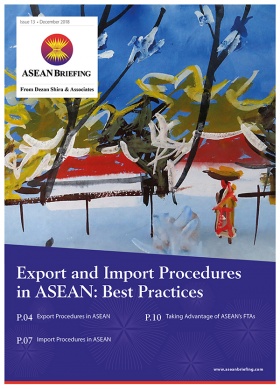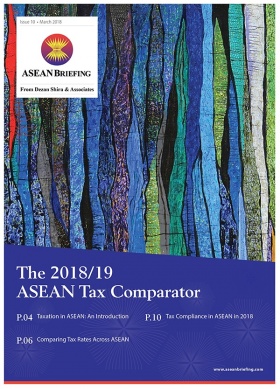New Tax Cuts, Incentives in the Philippines under CITIRA
- Philippine lawmakers reformed the corporate tax system through the Corporate Income Tax and Incentives Rationalization Act (CITIRA).
- CITIRIA will reduce corporate income tax from 30 percent to 20 percent over a 10-year period as well as rationalize specific tax incentives.
- The government hopes the bill will attract greater foreign investment and make local SMEs more competitive in the region.
On September 16, 2019, lawmakers reformed the Philippines’ corporate tax system by introducing the Corporate Income Tax and Incentives Rationalization Act (CITIRA). CITIRA sets out to gradually reduce the corporate income tax (CIT) rate and rationalize specific tax incentives.
Through CITIRIA, the government aims to attract greater foreign direct investment (FDI) and stimulate job growth. The Act is the second phase of the government’s Comprehensive Tax Reform Package program – which was launched in 2017 – and will apply to domestic and international businesses operating in the Philippines.
Businesses invested in the Philippines should review the tax cuts and incentives under CITIRA to understand if their business can lower their tax burden following the reform. Businesses that have not yet set up in the Philippines or Southeast Asia should consider whether CITIRA would make an investment more competitive, domestically and regionally.Corporate income tax cuts
The Philippines current CIT rate of 30 percent is the highest in ASEAN. Under CITIRIA, the will be cut to 20 percent in annual increments of 1 percentage point over a 10-year period starting in 2020.
The government argues that lowering the CIT will help more than 90,000 micro, small and medium enterprises (MSMEs) in the country as well as make the investment climate more competitive.
Rationalized tax incentives
CITIRA sets out to eliminate the differences in incentives granted by investment promotion agencies, the Philippine Economic Zone Authority (PEZA), as well as those issued by the Board of Investments.
Under CITIRA, the new tax incentives are as follows:
- 10 percent deduction for depreciation for qualified capital expenditure for buildings;
- 20 percent deduction for depreciation for qualified capital expenditure for machinery;
- Up to 100 percent deduction on research and development expenses;
- Up to 100 percent deduction for labor training;
- Up to 100 percent deduction on country-wide infrastructure development;
- Up to 50 percent deduction for reinvesting profits in the manufacturing industry;’
- Up to 50 percent for domestic input expense;
- Up to 150 percent for direct labor expenses;
- Exemptions from customs duty for the import of raw materials and equipment; and
- Enhanced net operating loss carry-over (NOLCO) (5-year carry-over).
How to obtain incentives
Companies applying for CITIRA incentives will have to enter an agreement with the authorities through which their eligibility will be judged on measurable economic contributions:
- Create high-quality jobs;
- Stimulate economic growth to rural areas;
- Stimulate local industries;
- Promote higher-value exports;
- Use new and modern technology;
- Add supply chain links; and
- Develop a pioneer industry
The Fiscal Incentives Review Board (FIRB) will review companies that avail of the incentives every two years for compliance. Failure to achieve the above targets will mean companies cannot retain their tax incentives.
Strategic Investment Priority Plan
Of the 500 SEZs in the Philippines, more than 41 percent are in the National Capital Region (‘Metro Manila’). Under CITIRA, the government’s Strategic Investment Priority Plan (SIPP) will formulate the development of new priority regions.
The government will provide an income tax holiday (ITH) of six years with an additional three years of perks for businesses willing to:
- Relocate their activities outside of the Metro Manila area;
- Establish agribusiness initiatives outside of the Metro Manila area; and
- Initiate projects in less-developed regions of the country.
After the expiration of the ITH incentive, companies can choose to be taxed under the reduced CIT 18 percent rate starting from January 1, 2020, which will be reduced by one percent point every other year until 2030, or the regular CIT rate with the deductions offered under the CITIRA incentives.
Companies that are paying the existing five percent gross income earned (GIE) tax incentive with PEZA can enjoy the said incentive for its set time limit or up to five years, whichever comes first:
- Two years for firms availing of the incentive for 10 years or more;
- Three years for firms availing incentives for five to 10 years; and
- Five years for firms availing incentives for less than five years.
Special powers
CITIRA gives the president the power to grant incentives to projects that have a long-term sustainable plan and are a total investment of at least US$200 million.
Further, the FIRB will now oversee the function of the country’s various investment promotion agencies and approve all incentives with the Department of Finance leading the FIRB.
What this means for foreign investors
CITIRA has come as countries across Southeast Asia have scrambled to cut taxes and introduce incentives to attract investors that are seeking to either shift or diversify supply chains because of the US-China Trade War.
Vietnam emerged as an early winner, but Indonesia’s new tax incentives and Thailand’s new investment scheme are also designed to encourage foreign investment through tax cuts and incentives.
Critics have argued that the 10-year implementation period could be too long of a transition period to compete with ASEAN neighbors. Indonesia, for instance, is also preparing to cut its CIT rate from 25 percent to 20 percent starting in 2021. Meanwhile, India, which competes with the Philippines for foreign investment into IT-BPO and lower value manufacturing, recently announced large corporate income tax cut.Others expect CITIRA to primarily help SMEs, particularly those that are seeking to enter into higher-end, value-added work. Equally, incentives for investments outside of Metro Manila may help the Philippines develop its infrastructure and supply chains to compete more readily with its neighbors.
Investors, ultimately, will welcome the gradual reduction of CIT, and the implementation of a more simplified CIT system. The incentives will likely help attract investors looking to shift a part of their supply chain from China or diversify within Asia. The government hopes CITIRA will create 1.5 million jobs and improve the investment landscape.
About Us
ASEAN Briefing is produced by Dezan Shira & Associates. The firm assists foreign investors throughout Asia and maintains offices throughout ASEAN, including in Singapore, Hanoi, Ho Chi Minh City and Jakarta. Please contact us at asia@dezshira.com or visit our website at www.dezshira.com.
- Previous Article Corporate Taxes in the Philippines
- Next Article Tax Incentives for Developing Talent in Indonesia







